I could spend this entire page being really mean about Knightmare: how terrible it was, how it should never have been successful, and how no child in their right mind should have wanted to take part. However, if I did that it would be mostly based on the fact that my best friend and I applied to go on it several times and our requests were never so much as acknowledged. If I disregard that fact (and obviously we all know that the show would have been even better with us starring in it…) then I actually have nothing but praise for Knightmare.
For its time it was technologically ground-breaking; using blue screen technology to transport the players from a dull studio to a fantasy world of magic, puzzles and eccentric characters.
Based on role playing computer games, each episode featured a team of four secondary school aged children negotiating their way around Knightmare Castle’s dungeons, overseen by Dungeon Master Treguard (played by Hugo Myatt). One team member would volunteer to be the ‘dungeoneer’, and would be called into an underground chamber to start the game by Treguard saying ‘Enter, Stranger’. Once inside he (or she) would give his name, and call in his three ‘advisors’. The first wizzy bit of technology was used here, as the three other children would suddenly appear beside him - without using a door or anything!
The dungeoneer was then given a knapsack so he could hang on to any food he found along the way (there was a specific reason for this which we’ll come to in a minute, it wasn’t just in case he got peckish whilst he was filming) and the ‘Helmet of Justice’ which took away his ability to see anything that wasn’t happening directly in front of him, although officially he was told it was to protect him from ‘the dangers ahead’. It did however made him look faintly ridiculous, although had I got on the show (which I DIDN’T) and got to wear it (which I DIDN’T) I suppose I would have been too excited about being there to care about that. Once the dungeoneer was kitted out it was then time for him to head off into the dungeon, being helped by the three advisors who could see everything that was happening to him via a small screen. The computer generated surroundings of the Dungeoneer were enhanced by hand-drawings and live actors.
It was the advisors’ job to help the dungeoneer on his journey, guiding him both physically through the dungeon, and helping him solve quizzes that were given to him en route. They had to give explicit instructions on how to avoid obstacles, which could take the form of ‘take three steps forward, then one small step to your right. There’s a shield on the floor in front of you, reach down and pick it up.’ The temptation to get him to do something completely unnecessary must have always been there though: ‘There are holes in the floor, to avoid them try – um – pirouetting across the room…?’
To successfully complete their quest, the dungeoneer and his advisors had to negotiate the three levels of the dungeon. Oh and stay alive. Alive in the role playing ‘I cast the dead spell on you’ sense of course – Treguard always told the dungeoneers that no matter what happened in the game, they would still survive in ‘their own time’. Which I’m sure was reassuring to those contestants who hadn’t realised that it was in fact, a game – and had said tearful goodbyes to their parents when they were dropped off outside the television studio.
The three levels of the dungeon could be accessed in several ways; via descenders (what you and I would call lifts), wellways, cart rides or my personal favourite method of transportation, Smirkenorff the dragon. From Series 2 onwards the competitors also had to hunt for a particular piece of treasure; The Sword of Treasure or The Cup That Heals as examples.
The fantasy world the dungeoneer explored was filled with interesting characters; some who would help him, such as wizards and jesters, and others who would hinder him, such as guards who would try and prevent him entering rooms by demanding a password. To begin with there were no specific enemies; witches and sorcerers were to be avoided, as they would be the ones that would try to take object from him, steal spells that he might need or even try to kill him, but the closest the teams would come to a real baddie was Mogdred (John Woodnutt). He would try to frighten the dungeoneer in the hope of throwing him off course, and he did end a couple of teams’ hopes in series two and four. From series five onwards a more ‘good versus evil’ theme was introduced. Two distinct camps were created: the ‘Powers that Be’ were represented by the helpful characters, whilst all those with less than saintly attitudes fell under the umbrella of the ‘Opposition’, led by Lord Fear (Mark Knight).
Spell casting was an important part of Knightmare – they could be picked up as the dungeoneer went along and were used for many different purposes, including opening doors, attacking enemies or getting people to reveal answers to clues. In order to use them however you had to spell them out certain words, so bad spelling could lead you to your doom. Spells could also help revive the dungeoneer’s life force; the measure of your progress which slowly counted down if the team took too long to make decisions, the dungeoneer was attacked or a wrong path was chosen. Food put into the knapsack would also revitalise the life force (you thought I’d forgotten about that didn’t you?).
Winning the prize for traversing safely through the dungeon was hard – and I mean really hard. Not your normal kids’ show where challenges were relatively easy, or you got a consolation prize for being a bit rubbish, in Knightmare you had to really put the effort in, and it wasn’t often rewarded. In the whole history of Knightmare - eight series with 112 episodes – only eight teams ever finished as victors. Obviously this may be because some of them just weren’t up to it, but it was also because the creators of the programme kept the difficulty level extremely high, a breath of fresh air in the face of patronising children’s shows everywhere. Almost as hard as the final question on 3-2-1, although nobody ever understood Ted Rodger’s explanation for the answer on that one. The eight out of 112 statistic was always slightly skewed by the final episode of each series; towards the end of the quest the dungeon would start to collapse before they had the chance to complete it.
The idea of Knightmare began in 1985, after creator Tim Child decided to try recreating the type of adventure games that he had played on his Spectrum computer. With the help of an artist and a computer graphic design company the world of the dungeon was brought to life on screen. Two pilots were filmed in 1986 and January 1987, and in February the ITV Children’s Committee gave the go ahead to the first series. It was then broadcast in September of that same year. The originality of the concept proved massively popular with the CITV audience, with series two and three following on its coattails. To keep it fresh the fourth series was injected with new scenes (including some set outdoors) and additional gadgetry, and viewing figures kept rising. By 1991/2 the show was regularly receiving audiences of four to five million, and became CITV’s most popular non-animated show by 1993. Before the eighth series kicked off the new CITV controller decided that because the average ages of viewers had fallen to between six and ten, with older viewers now more likely to be accessing satellite channels or playing video games, Knightmare should move aside for programmes that were suitable for them. The planned series still went ahead, but with fewer episodes. Viewing figures for what was shown were still good.
And so November 1994 saw the end of the most visually interesting and intellectually challenging children’s programme of the 1980s/90s. In 2008 Child hinted that the show might be returning, but nothing more came of that until November 2002, when the idea of Knightmare VR, an updated version of the original which used a 3D computer generation to immerse the dungeoneer in the shadowy world. Child’s production company was awarded a National Lottery grant to make the pilot but unfortunately the reaction was less than complimentary (‘cheesy’ was one comment, something which the original show could never be accused of) and in 2005 the whole thing was scrapped.
It would be interesting to know whether Knightmare VR’s pilot would have been received a better response if the original Knightmare had never existed; perhaps it was a case of ‘they don’t make ‘em like that anymore’ nostalgia for a programme that everybody remembers and loves. Which I do. Even though I wasn’t on it.



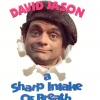
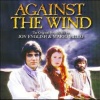
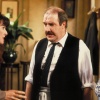

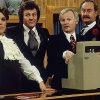
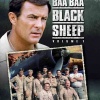

Do You Remember Knightmare?
Do You Remember Knightmare?
-

Anonymous
on
I saw this recently on challenge tv or one of the many channels on sky and it was still as good as when I was sitting eating egg and chips in front of the tv when i was 10 and does anyone remember the adventure game where they spoke backwards and there would be a celebrity team trying to get to the vortex and they could put a burger on the grid to see if the vortex was there they just dont make tele like that any more!

-

Anonymous
on
Treguard reminded me of my head mistress for some reason, back in primary school! "ooohh nasty". When i listen to the theme tune even today, always bring smile to me and sometimes gives me goosepimples!

-

Anonymous
on
"Where am I?" "Your in a room with a door on your right and there is a table in front of you. What is on the table?" There used to always be some food that they would have to put in their knap sack before their energy ran out (which was shown by a picture of a face which would slowly peel away to a skull and then the eyeballs would fall out) it wasn't as horrific as it sounds. There was often a spy glass that the dungeoneer would hold up and they could spy on the enemy, although they had to put it down quickly before they were found out. They also used spells, for example... "Spell casting sword S W O R D" and a sword would appear and scare the enemy away. What's worse is that I am a 29 year old who still watches it on the Challange channel on sky from 8-9am, and I still can't answer the riddles.

-

Anonymous
on
i remember watching this after school, i remember shouting at the telly because the poor kid couldnt see properly because of the helmit yet the kid giving him directions didnt know his left from his right.. so he basically didnt reach the table to get the energy food and got eaten by a giant spider which was breaking through the wall behind him.... it was all very gripping, i seem to remember wearing noddy dungerees whilst watching that once... (did i just say that)

-

Anonymous
on
Every single school in the UK had groups of kids trying to find 5 people to go on Knightmare. After a hard days work of playing line-tick and red rover at lunchtime and then doing long multiplications with those square wooden blocks (no calculators then), nothing beat coming home and waiting till 4:40 (i think thats right) on a friday evening to see how those kids get on. Incidentally Knightmare is on challenge TV at about 4am on some nights... now thats nostalgia

-

Anonymous
on
Warning team!

-

Anonymous
on
I absolutely loved this and had a choose your own adventure-style book as well. I remember a giant spider that used to get closer and closer while the kid in the helmet had to perform some godawful task

-

Anonymous
on
We both loved Knightmare, it was our Friday night escapism, we used to watch it just before our tea and after a hard week at school!

-

Anonymous
on
i loved knightmare, although it scared me a bit! it was great all the same though! bring it back!

-

Anonymous
on
I loved this show so much that I was always tempted to write in to get on it. I never did, and I never wanted to be the kid in the helmet. I didn't fancy getting killed if the game was lost by my friends!

Show previous comments